Art & Exhibitions
In Review: London’s Must-See Gallery Shows This March, from Markus Lüpertz to Marvin Gaye Chetwynd
Coline Milliard reviews the five most essential London gallery shows on in March.
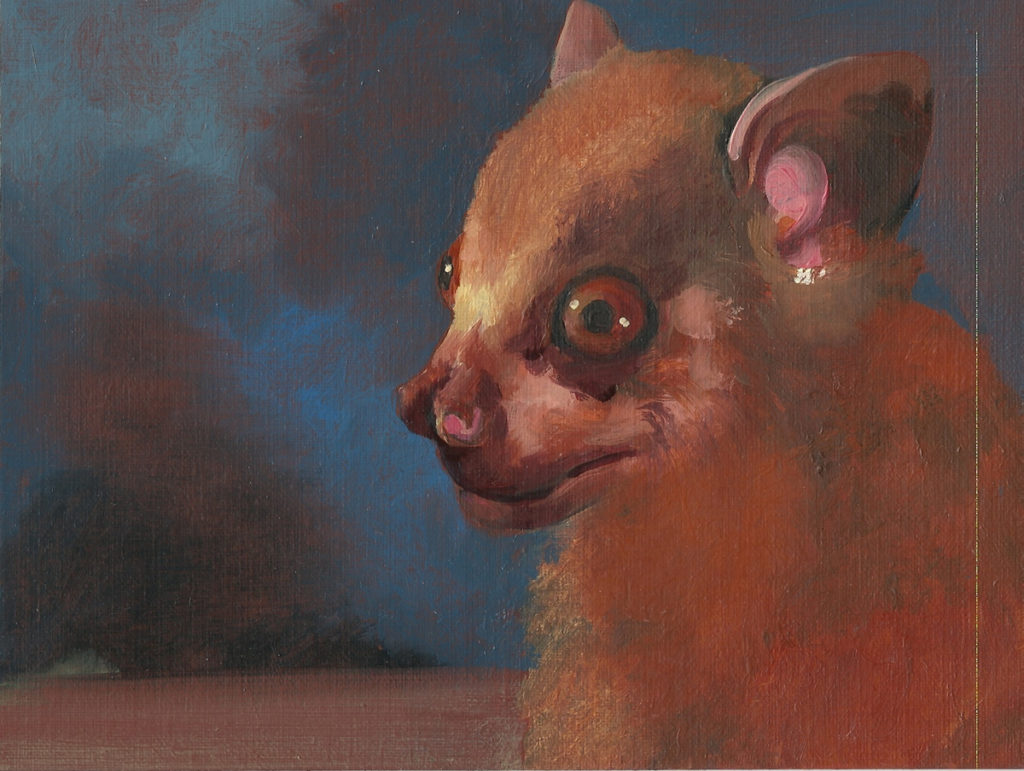
Coline Milliard reviews the five most essential London gallery shows on in March.

Coline Milliard

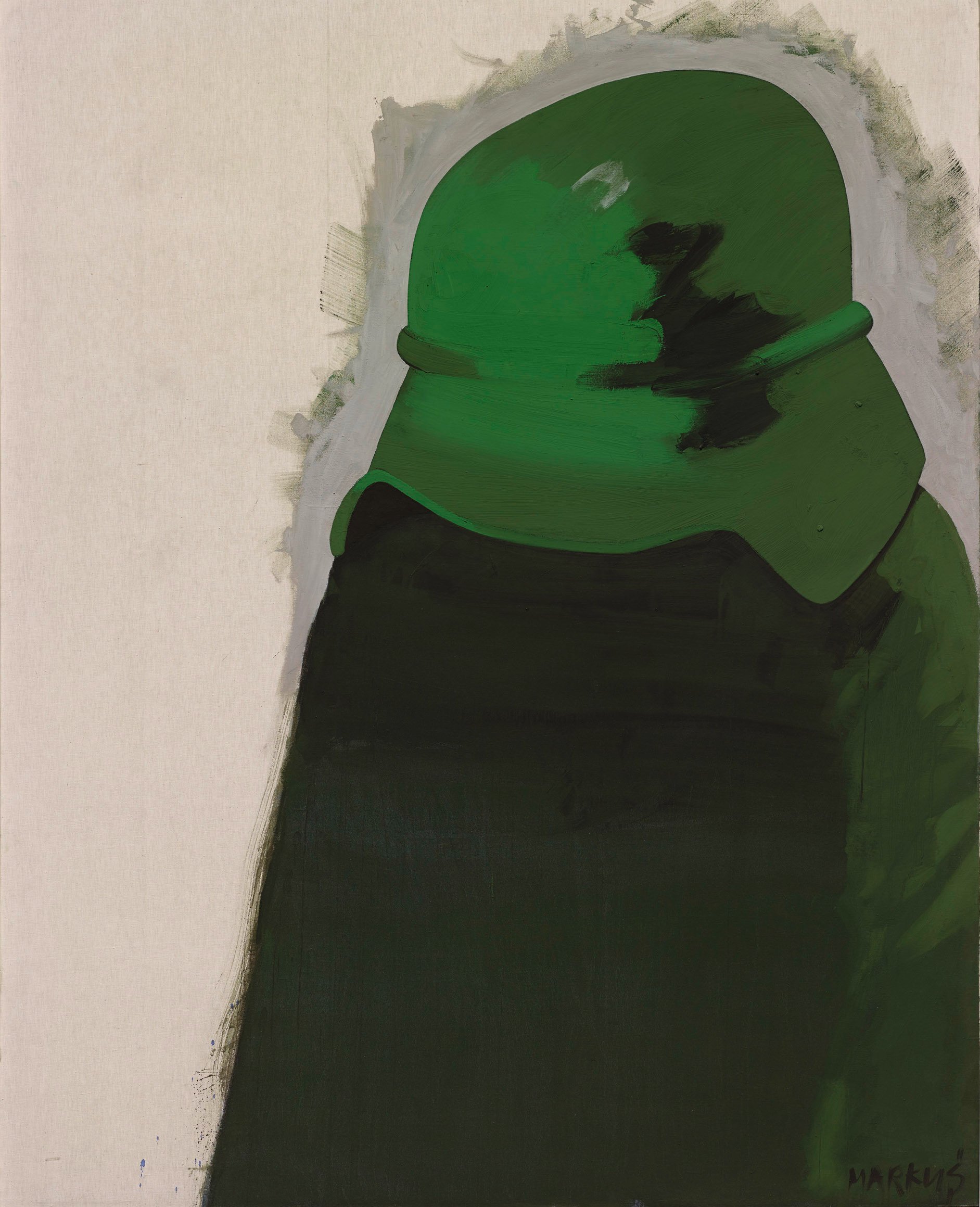
Markus Lüpertz, Helmet I (1970)
Courtesy Michael Werner Gallery, New York and London
Markus Lüpertz, “Players Ball,” Michael Werner Gallery
A giant of German painting on a par with the much-acclaimed Georg Baselitz, Markus Lüpertz has been surprisingly little-shown in the UK: his last solo presentation in London was in 1979. This dense exhibition, curated by fellow painter Peter Doig, is thus something of a Lüpertz crash course. It surveys the artist’s half-century-long career with just about as many paintings as the walls can carry. It’s as if Doig was so anxious to do justice to Lüpertz’s multifaceted oeuvre that he couldn’t bring himself to leave anything out.
But he brilliantly succeeds in showcasing the ambition of Lüpertz’s project. While the German painter’s production is overwhelmingly figurative, he sees himself an abstract painter, tackling core issues related to the nature of the medium. The tents, logs, and helmets repeated ad nauseam in his series—a strategy he describes as “dithyrambic painting” and of which representative examples are shown here–stand as experiments with the application of the brush on the canvas and the balancing of monumental compositions. Lüpertz was spurred on by a desire to forge a new path for German art in the post–World War Two era, like many of his contemporaries tackling the country’s Nazi past. The green helmet in Helmet I (1970) functions both as a metonymy for Germany’s cruel 20th-century history, and a symbol of all conflicts, softened, almost pacified, by the dark swathe of forest green.
Based on an outfit found in a mail order catalog, Man in Suit – dithyrambic I (1976) sheds light on Lüpertz’s Pop tendencies, linking him to the likes of Richard Hamilton and Andy Warhol. The artist has also been a “painter of modern life,” plugged to the mundane and reflecting on the pervasive lure of capitalism. Yet it is the most recent work that best demonstrates Lüpertz’s sense of his own place in art history. The behemoth figure of Odysseus/Achilles (2013) stands in a room hung with a pictorial declension on the classical male nude. His legs are powerful to the point of grotesque, his torso defined but shockingly out of proportion. The Western canon is chewed up and spat out, transformed.
Until March 15, 2014
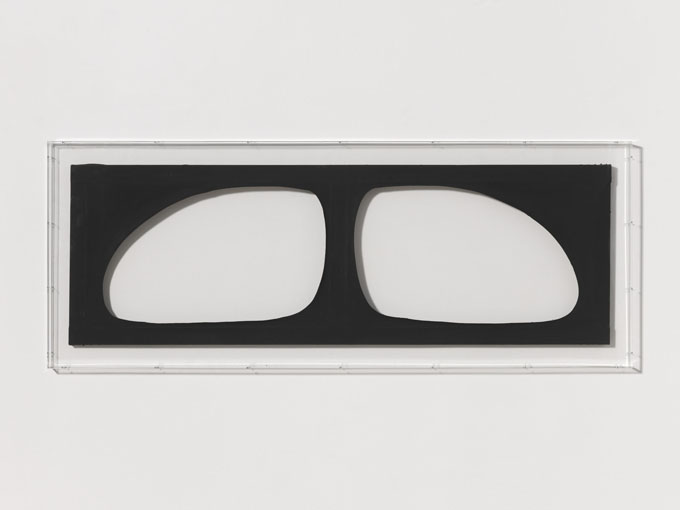
Dadamaino, Volume (1960)
Courtesy MDC London
Dadamaino, “VOLUMI,” Massimo de Carlo
Dadamaino was the surprise of Sotheby’s Italian art auction last September, when one of her Volumi fetched a handsome £105,000 (US$ 174,726). The market is finally rediscovering this lesser-known female artist (born Edoarda Emilia Maino, 1930–2004), who first made her mark in Milan in the late 1950s as a member of the group surrounding Piero Manzoni. This show focuses exclusively on the Volumi series: black or white canvases out of which organic shapes have been cut. The influence of Lucio Fontana’s spazialismo is obvious, and was fully acknowledged by the artist, who first saw his work in a housewares shop. Dadamaino looks at the possibility of creating images with the canvas rather than on it. The holes, the absences, are what define these elegant pieces. Images have become irrelevant, no illusionary trick is allowed. The cut-outs are both the means of representation and the represented objects. In several cases, the regularity of these removals also brings to mind something much more associated with the Op Art of Bridget Riley. The eye doesn’t simply traverse the canvas towards a real or imagined elsewhere, it jumps from curve to curve, following a rhythmic pattern. Although these works are fundamentally formalist, they never feel self-absorbed. The Volumi harness the poetic power of the simple intervention, investigating the very nature of the creative process.
Until March 29, 2014
![Carolee Schneeman, Water Light Water Needle [IV] (1966-2014) Courtesy Hales Gallery](https://news.artnet.com/app/news-upload/2014/03/Carloee-Schneeman-Water-Light-Water-Needle-IV-1966-2014-EDIT.jpg)
Carolee Schneeman, Water Light Water Needle [IV] (1966–2014)
Courtesy Hales Gallery
Although characteristic of its era, the joyful hedonism of these images comes as a surprise from an artist best known for her Dionysian Meat Joy (1964) performance or landmark feminist work, Interior Scroll (1975), in which a naked Schneemann extracted a scroll from her vagina and read out from it. Alongside the film, the display features vintage photographs, sketches and diagrams realized at the time, as well as a series of new pieces revisiting Water Light/Water Needle, for which Schneemann painted with acrylic on a handful on photographic prints. The cynic might see these as an attempt to generate more marketable products out of what is now part of performance art history, but the pieces, dated 1966-2014, are nonetheless convincing. Dynamic swathes of pinks, yellows, and blues infuse the grey images with a real vitality. Renewing with the artist’s first love, painting, they demonstrate another possible way for performance to exist beyond itself and the often dry documents it leaves behind.
Until April 12, 2014
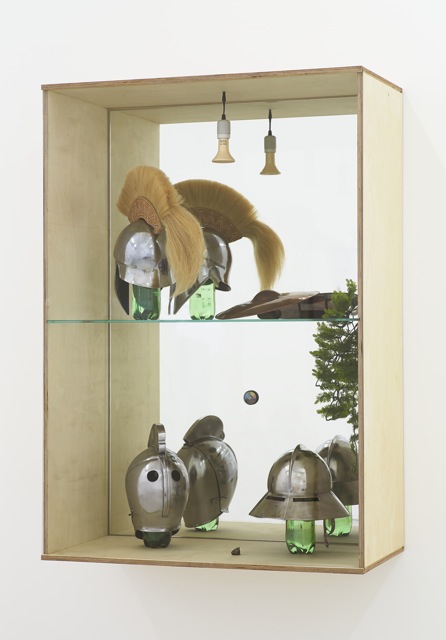
George Henry Longly, Take it, it’s yours (2014)
Courtesy Jonathan Viner, London
George Henry Longly, “Hair Care,” Jonathan Viner
George Henry Longly has made a name for himself with his sleek sculptures investigating the visual lexicon of luxury and consumerist desire. The inclusion of Yves Saint Laurent’s “Touche Eclat” foundation wands has almost become a trademark, functioning formally as an alluring golden stripe, and conceptually as a dig to the faith some place in cosmetics’ transformative powers. This latest show at Jonathan Viner claims to be articulated around the idea of hair, or rather, our obsession with it, from Samson to Vidal Sasoon. Scant actual hair is present in the show. The exhibition’s pièce de résistance is three vitrines, all amplifying and exploiting the seductive quality of their objects. Take it, it’s yours (all works 2014) features shiny helmets perched on green water bottles (live geckos are also said to be part of the display, but they stayed out of sight). Bodys showcases the plaster cast of a torso and a leg in a glass-covered marble box, reclining like an antique god on an Issay Miyake pleated garment. Madame T involves an abstract bronze sculpture based, we are told, on a hermaphrodite sculpture the artist first saw in Rome. Plastic foliage, thrown in as if for good measure, heightens the artificiality of the ensemble. Whether or not these are hair-related seems beside the point. At times redolent of some of Heim Steinbach’s best sculptures, the dynamic interactions Longly deftly stages between materials and found objects are more than enough to sustain “Hair Care.”
Until March 22, 2014
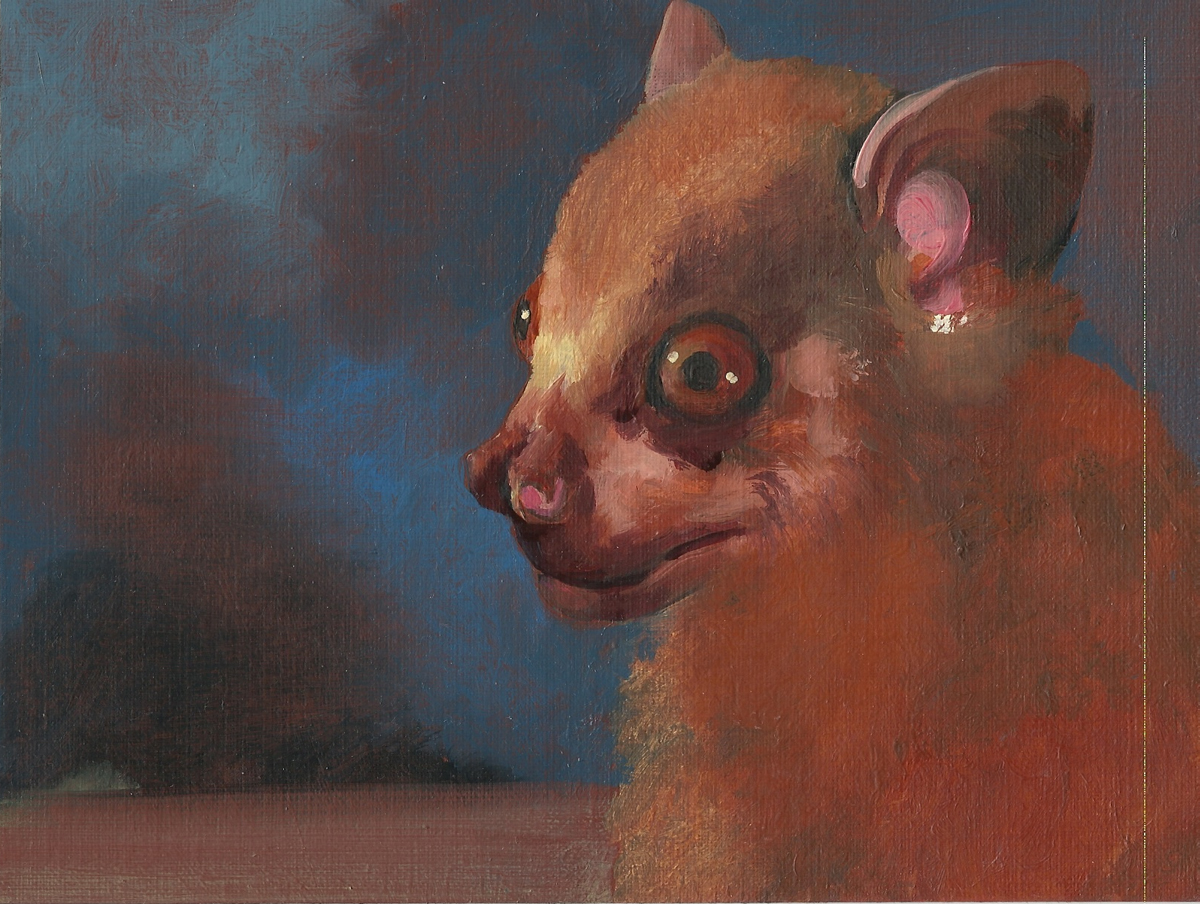
Marvin Gaye Chetwynd, Bat Opera 412 (2013)
Copyright Marvin Gaye Chetwynd 2013
Courtesy of Sadie Coles HQ, London
Marvin Gaye Chetwynd, Sadie Coles HQ
Marvin Gaye Chetwynd’s solo show at Sadie Coles HQ is a study in the presentation of publications in 3D form. None of the performances for which the 2012 Turner Prize nominee (formerly known as Spartacus Chetwynd) is best known make an appearance—not a prop or a costume is in sight. Instead the exhibition is a launch pad for the artist’s latest: a textless compilation of her bat painting series, collectively titled the Bat Opera, and her take on Chaucer’s Canterbury Tales. At street level, the gallery has been wallpapered from floor to ceiling with blown-up black and white pages of the artist’s highly personal interpretation of this medieval classic. Collages and photographs pinned on the walls set up a grotesque portrait gallery, a mix of Gothic imagery and family portraits introducing the tales’ scenes and characters. These images operate both as décor and potential performers on this empty stage, as if waiting to be activated. The downstairs space offers a more intimate experience. Also wallpapered—but this time with enlarged page proofs of the bat book—the walls are subsequently lined with Chetwynd’s paintings themselves: dozens of small pictures, all featuring the nocturnal mammal in a variety of poses and formations. Set in relation to The Canterbury Tales, they almost acquire the quality of illuminations. These pictures—knowingly absurd and outside all contemporary canons—show the artist tackling the medium she first chose as a student and then picked up again quietly in 2002. The show is a testament to Chetwynd’s growing confidence and ability to embrace her own creative output in all its forms.
Until April 26, 2014